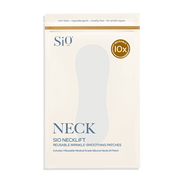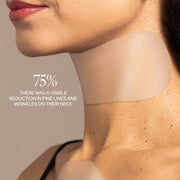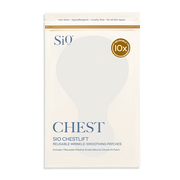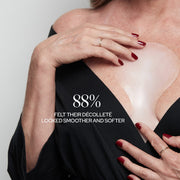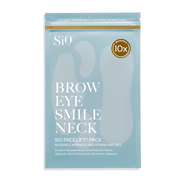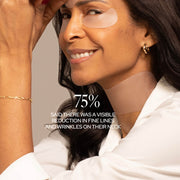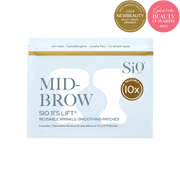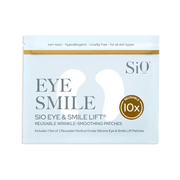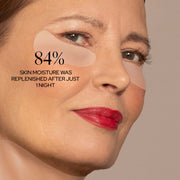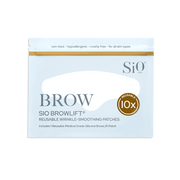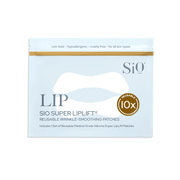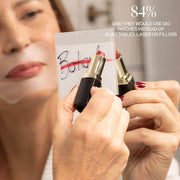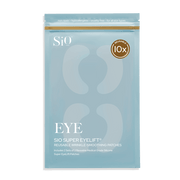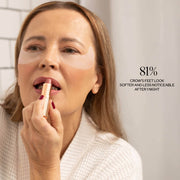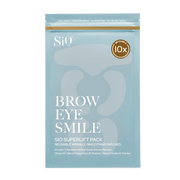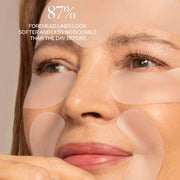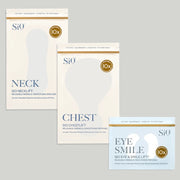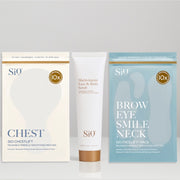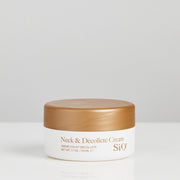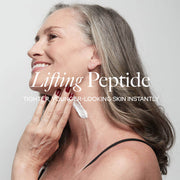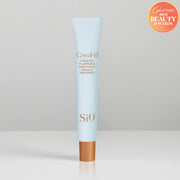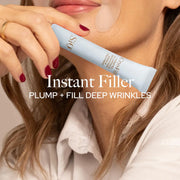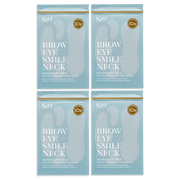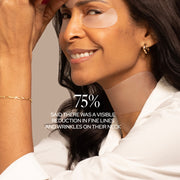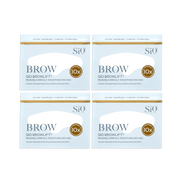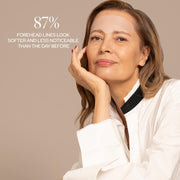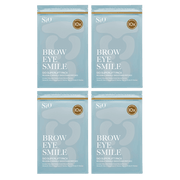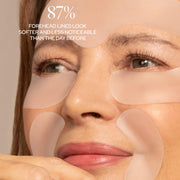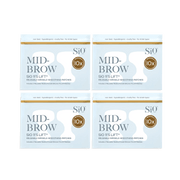How to Get Rid of and Prevent Crow’s Feet

You know the feeling. You wake up one day and just can’t believe your eyes.... literally. Crow’s feet are one of the most common skin complaints, and they can show up as early as mid- to late-20s, deepening as years go on. But where do these unwelcome visitors come from, and how can we send them back where they belong? We’ve got the scoop.
What Causes Crow’s Feet Around Your Eyes?
The main reason that crow’s feet develop comes down to the way we move our faces. The average person blinks about 13,500 times a day. Add a few smiles, chuckles, sneezes, and yawns, and your eye orbit has seen more than its share of scrunching in twenty-four hours. Hard to get around it; the truth is that repetitive movements crease the skin. Over time, these motions break down the elastic fibers and collagen, causing wrinkles that just won’t budge. Why the eye region more than anywhere else? Well, the skin in this area is significantly thinner than the rest of the face, so it’s extra prone to line formation and particularly susceptible to damage from outside sources like UV rays and pollution. To make matters worse, it also produces very little oil, which studies say can contribute to deeper wrinkles when compared to areas that have a higher concentration of sebaceous (oil-producing) glands. But not to fear! Our skin may be getting thinner, but we’re getting smarter.
5 Treatments for Getting Rid of Crow’s Feet
Looking to banish crow’s feet? Welcome to the club. Here are a few of the best treatments for crow’s feet, as recommended by experts:
1. Take Your Vitamins
We’re not talking about your daily multivitamin capsules. We’re talking about topical skin superheroes vitamin A, vitamin B3, and vitamin C. You may better recognize “vitamin A” as “retinoids” when it comes to skincare. Retinoids of all forms (retinol, tretinoin, etc.) are hailed as some of the most reliable anti-aging compounds in the world. Their ability to thicken the skin as well as stimulate collagen and elastin production have been well documented for decades.
As for the next two letters in the alphabet, Vitamin B3, otherwise known as Niacinamide, is statistically proven to have the ability to smooth wrinkles and improve elasticity. And vitamin C... what can’t it do, really? Vitamin C is a highly effective antioxidant treatment that firms up loose skin and protects it from external stressors. Look for eye creams that have the A-B-Cs covered, and you know you’re in good hands.
2. Mask Them Away
You probably know by now how important it is to hydrate, and eye masks are a great way to give your skin a little extra love outside of the normal routine. Dehydrated skin is a wrinkle’s best friend—which is why the naturally dry eye orbit is especially prone to under-eye wrinkles and fine lines. Nip dryness in the bud with a nourishing eye mask containing hydrating ingredients like aloe, hyaluronic acid, or glycerin. Or better yet, let your skin soak up its own goodness by using a 100% silicone patch, like SiO Super Eye Lift. These simple stick-on pads iron out crow’s feet while creating an ultra-hydrating microclimate that pulls moisture up from the lowest layers of the skin through the surface, resulting in dewy, firm, bouncy skin. Just pop the patches on at night—or for an hour or two before that big event—and come out good as new.

3. Try a Little Glycolic Acid
Exfoliation is not only fantastic for preventing wrinkles, but it can also level out existing crow’s feet by removing dead skin cells and revealing a fresh, new layer beneath. It also encourages blood flow, which can help regenerate and restore healthy tissue. But there’s a catch: physical exfoliators are harsh on the sensitive eye area. So, ditch the apricot scrub, and opt for a chemical exfoliator like glycolic acid. You can buy eye serums, gels, and creams containing glycolic acid, but for next-level wrinkle release, turn to the professionals. In-office glycolic acid peels use a higher concentration for more immediate results. In fact, you’ll see a difference in the first couple of minutes—and the whole treatment is done in about ten.
4. Give Yourself an Eye Orbit Massage
Crow’s feet are very much a product of facial movement, which is possible thanks to the powerful muscles underneath. Repeated clenching in this area takes a toll, and in order to soften the lines, you have to relax the muscles. As with any other muscle in your body, the best way to do that naturally is to enjoy a little massage. Whenever you apply your eye cream, spend a couple of minutes massaging the region around your eyes to loosen it up. Massaging stimulates circulation and can even help firm up the skin itself—not to mention, it’s incredibly relaxing.
5. Dabble in Dysport
When you’re ready to bring out the big guns, Dysport is your guy. Dysport is a neuromodulator just like Botox or Xeomin. Although Botox seems to get all the love, Dysport has actually been performing better in studies when it comes to crow’s feet. Both work by inhibiting the muscle movement in the area where they’re injected. When you can’t tighten the muscle as much, the wrinkles above it can’t form. That being said, Dysport works best as a preventative measure—or when crow’s feet are at the beginning or moderate stage. It can dramatically soften existing lines, but for deeper folds, you may want to pair it with a hyaluronic acid filler to plump between the gaps.
Simple Ways to Prevent Crow’s Feet Around your Eyes
As with anything, when it comes to crow’s feet, prevention is key. Here are a few easy things you can do to avoid crow’s feet in the first place.
Wear Those Shades
Studies show that the sun is responsible for about 80% of skin aging, which is why we are constantly reminded that wearing sunblock is crucial for good skin health (It is—do it!) But most of us happen to neglect the eye area when it comes to UV protection. If you use an eye cream in addition to your daily sunscreen moisturizer, make sure the eye cream contains SPF, too. And either way, always wear your sunnies. The benefits of sunglasses are twofold: for one, they provide a physical barrier against the sun, and for another, they prevent you from squinting in the light and cementing those crow’s feet in place. Oh, and P.S., skip out on the mirrored lens trend; they only attract more sunlight to the skin.
Stay Moisturized
And don’t just leave it at eye cream. There are other things you can do in between to make sure your eye area doesn’t revert to its naturally dry state, even if you’re braving the Sahara desert—or, you know, your air-conditioned office. Besides weekly moisturizing masks, face mists are a great, portable skin treat that you can keep in your desk drawer or purse. They ensure that your face maintains the humid environment it loves, regardless of your surroundings. And if you really want to commit, get a humidifier or essential oil diffuser to maintain moisture in heated or air-conditioned spaces where the air is especially arid.
Don’t Rub
You may do this more than you realize. Even if makeup keeps your hands off during the day, you still could be rubbing your eyes in the morning or at night. Every time you do it, you’re stretching and scrunching the skin, slowly sculpting those crow’s feet into existence. As you probably know by now, the skin has an elephant’s memory. Move it, in the same way, enough times and it’s not going to forget it. If you have allergies or eye dryness issues, try medicated eye drops that may alleviate the root problem without dragging your skin into the situation.
The Takeaway
We smile, we laugh, we read, we sunbathe… we make all kinds of lovely memories. If only they didn’t leave their footprints on the corners of our eyes. Luckily, there’s no need to sacrifice the good times because there are so many viable solutions for treating crow’s feet, and in this golden age of skincare, it’s never too late to reverse the damage.


